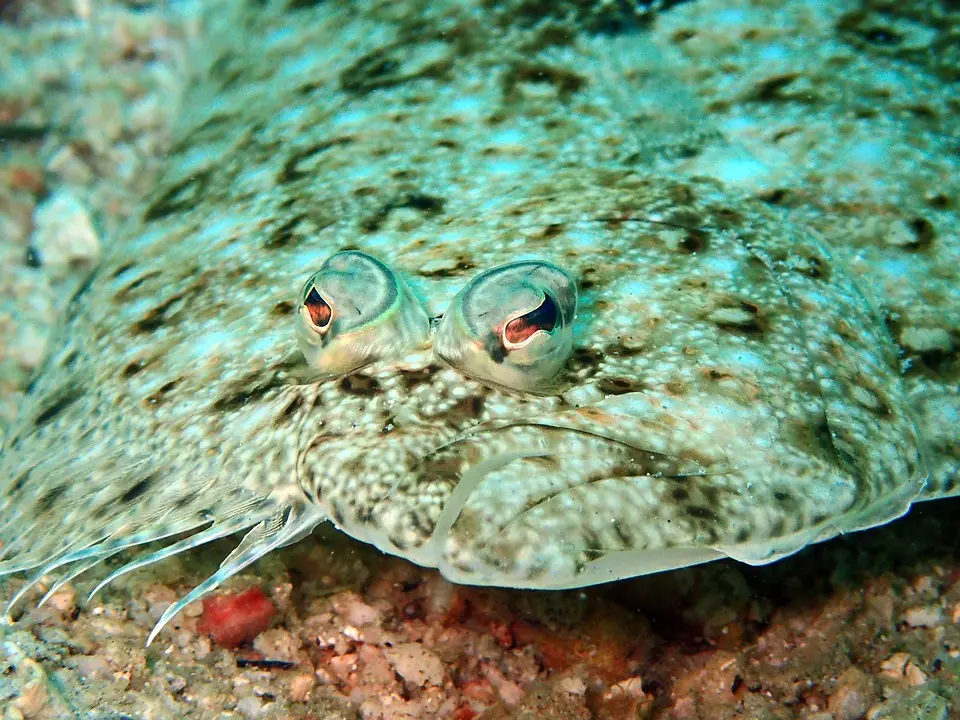Flounder: Stages - Adult
Table of Contents
- Fishing Adult Flounder
- Overview of Adult Flounder
- Adult Stages and Characteristics
- Habitat and Areas Where Adult Flounder Live
- Temperament Throughout the Adult Period
- Targeting Adult Flounder
- Techniques and Retrieves
- Bait and Lure Suggestions
- Community and Expert Angler Tips
- Popular Search Terms Related to Adult Flounder
Fishing Adult Flounder

Image Credit: kevskoot on Pixabay
Overview of Adult Flounder
Adult flounder are prized for their elusive ambush tactics and masterful camouflage on the ocean floor. As they mature, flounder undergo distinct stages that affect their behavior, habitat preferences, and responsiveness to different fishing techniques. Understanding these aspects is key to targeting them effectively.
Adult Stages and Characteristics
-
Early Adult Stage:
- Description: Newly matured flounder, still refining their camouflage and ambush strategies.
- Behavior: They are more active and sometimes less wary, exploring new territories on sandy or muddy bottoms.
- Feeding: Often opportunistic, their strikes may be light and testing as they adjust to adult foraging patterns.
-
Peak Adult Stage:
- Description: At their prime, adult flounder are larger, well-camouflaged, and highly efficient predators.
- Behavior: They are typically patient ambush predators, lying in wait on the bottom and launching explosive strikes when prey comes within range.
- Feeding: Their strikes are powerful and selective, with a focus on larger baitfish or crustaceans.
-
Late Adult Stage:
- Description: As they age further, flounder may become more sedentary, focusing on conserving energy.
- Behavior: They often retreat to deeper or more structured areas and may exhibit a slower, more deliberate feeding response.
- Feeding: Their strikes can be more finicky, requiring highly realistic presentations to trigger a reaction.
Habitat and Areas Where Adult Flounder Live
Adult flounder are typically found on sandy or muddy bottoms in coastal and estuarine environments:
- Estuaries and Inlets: Nutrient-rich areas where fresh and saltwater mix, supporting abundant forage.
- Coastal Shelves: Shallow waters along the continental shelf with ample soft substrate.
- Near Reefs and Structure: They can be found near natural or artificial structures where currents slow, providing ideal ambush points.
- Deep Channels: Some adults retreat to deeper water during different times of the day or season.
Temperament Throughout the Adult Period
- Active Feeding (Peak Stage):
When conditions are optimal (e.g., during high tide or when prey is abundant), flounder exhibit explosive strikes and rapid, aggressive feeding behavior. - Cautious Behavior (Early & Late Stages):
In the early or late adult stages, flounder tend to be more reserved, relying heavily on their camouflage and requiring subtle presentations to entice a strike.
Targeting Adult Flounder
Techniques and Retrieves
-
Steady Retrieve:
- Method: A smooth, continuous retrieve that mimics the natural swimming action of prey.
- Application: Effective when flounder are actively foraging along the bottom.
-
Stop-and-Go Retrieve:
- Method: Alternate between steady motion and short pauses to simulate injured or drifting prey.
- Application: Useful in situations where flounder are more cautious and testing the bait.
-
Erratic Twitching:
- Method: Introduce sudden, sharp twitches into your retrieve to mimic the erratic movement of wounded prey.
- Application: This technique can provoke a more aggressive strike, especially from peak adult flounder.
Bait and Lure Suggestions
- Live Baits:
Small baitfish (pilchards, minnows) or crustaceans that naturally occur on sandy bottoms are excellent choices. - Artificial Lures:
Soft plastics and realistic imitation baits in natural colors (sand, brown, gray) that blend with the substrate can be very effective.
Community and Expert Angler Tips
- Learning Through Video:
Watching detailed video tutorials can help refine your approach. Look for experts who specialize in fishing for flounder to learn advanced techniques.
Click the thumbnail above to watch a detailed guide on fishing for flounder
For more tips, check out "fishing Adult Flounder tips" on YouTube
Popular Search Terms Related to Adult Flounder
| Search Term | Thumbnail | Link |
|---|---|---|
| Adult Flounder Techniques | Watch Video | |
| Best Lures for Adult Flounder | Watch Video | |
| Adult Flounder Retrieve Strategies | Watch Video | |
| Where to Find Adult Flounder | Watch Video | |
| Adult Flounder Fishing Tips | Watch Video |
Ask AI for More Info
Try our AI assistant for free—sign up to access this powerful feature.
👉 Sign Up to Ask AI